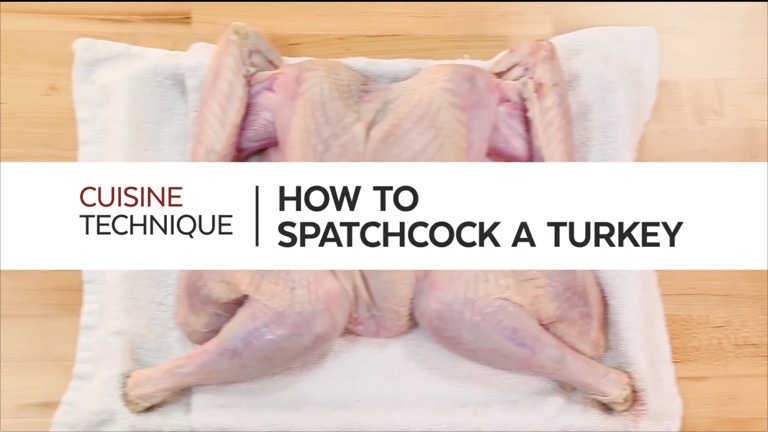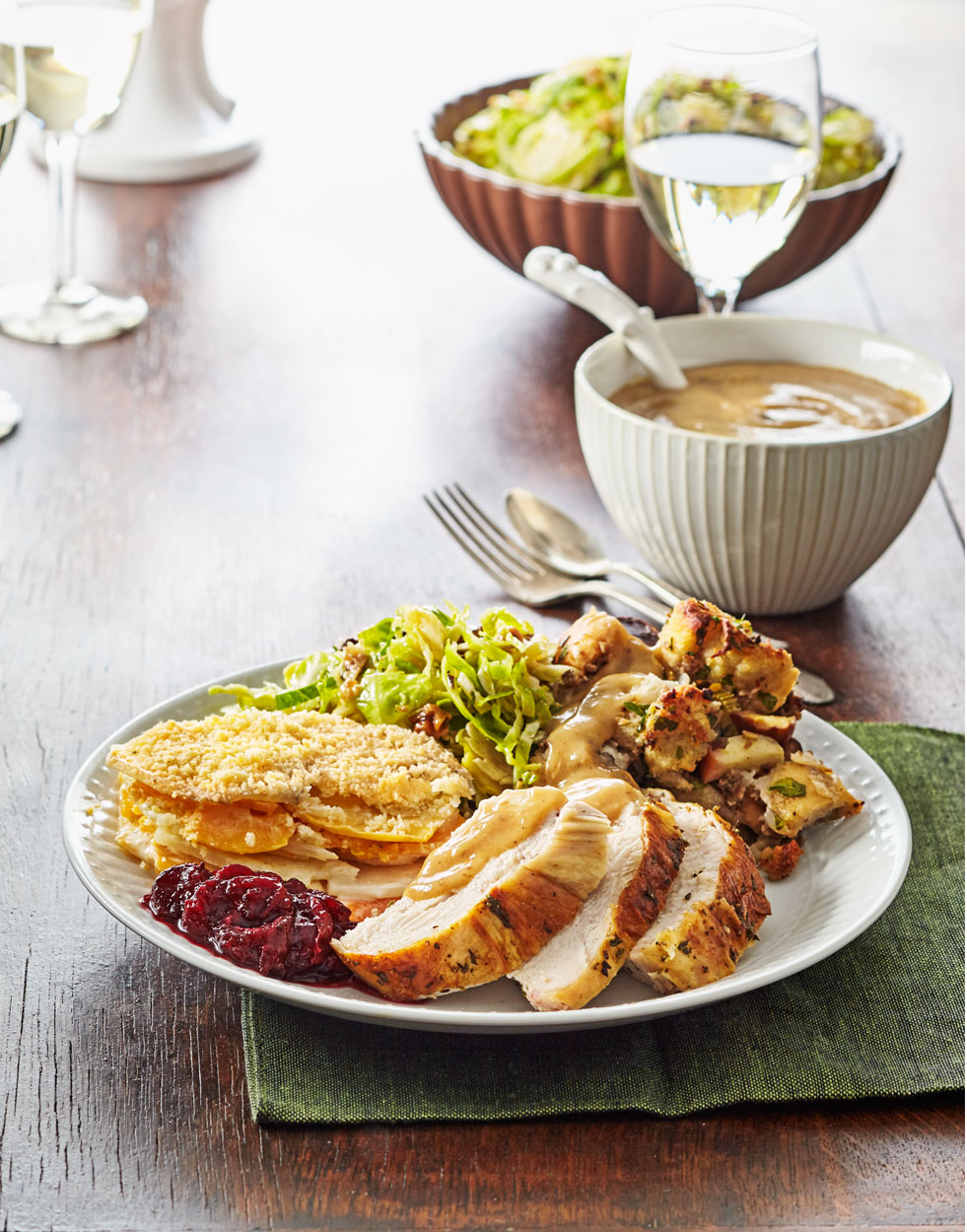How To Spatchcock a Turkey + Our Juiciest Turkey Recipe Ever
Roasting a juicy, perfectly cooked whole turkey doesn’t have to be stressful. Try this classic spatchcocking technique and Thanksgiving dinner will be faster, easier, and more visually exciting than ever before.

Chances are you’ve roasted a whole turkey more than once in your life. Perhaps you’ve experimented with some of our other recipes, like Roasted Turkey with Rosemary-Orange Butter, Herb-Butter Roasted Turkey, or our Roast Turkey with Pomegranate Molasses Glaze. Maybe you’ve brined and trussed a bird or two. But even if you’ve roasted a turkey only once, you’re familiar with the lengthy roasting time, uneven cooking, and the space it takes up in the oven as you’re cooking the rest of your Thanksgiving meal. This year, why not try something a little different? Spatchcocking. It’s a technique that’s visually impressive and surprisingly simple to achieve.
What is Spatchcocking?
Spatchcocking is a way of butterflying a bird to spread it out to a uniform thickness; it’s not hard to do, but can look intimidating. It really just comes down to removing the backbone and ribs, and a set of kitchen shears makes quick work of it. See the guide, below, for step-by-step instructions with photos.
Why Spatchcock a Turkey?
The typical Thanksgiving turkey tends to roast unevenly, with the breast cooking more quickly than the rest of the bird, and often drying out as a result; what a disappointment to discover your turkey has become dry and overcooked. With a spatchcocked turkey, you’ll be treated to meat that’s tender and moist. That’s because a spatchcocked turkey cooks more evenly, and without the need for basting or babysitting, or folding tricky aluminum foil shields.
As an added benefit, a spatchcocked turkey roasts in about half the time of a typical turkey, due to the oven’s heat penetrating more easily into a turkey cooked flat. Plus, with the bird flattened, you’ll have more space in the oven for sides. Oven real estate is highly coveted, especially at Thanksgiving, with sides like Scalloped Potatoes and Sausage & Apple Dressing competing with the turkey for space. Having that extra room can be a huge stress-reliever.
And perhaps best of all, spatchcocking means you can make Turkey Stock a day ahead with the reserved backbone and giblets — adding remarkable flavor to the dressing and Turkey Gravy.
All in all, spatchcocking a turkey saves time and uses less energy, plus you still have a whole turkey to serve to family and friends.
How to Spatchcock a Turkey — The Method
The technique is easy, all you need is a good pair of kitchen shears and a knife. Simply follow these step-by-step instructions and you’ll be spatchcocking a turkey in no time, and don't forget to grab our juiciest turkey recipe ever.
Step 1: Remove the Wishbone
Remove the wishbone by running a knife along either side of the bone, then gently pull it out.
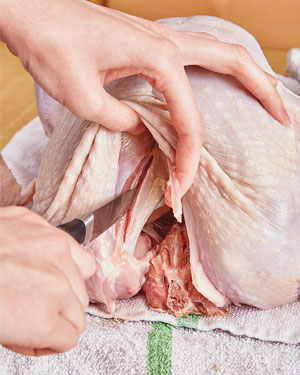
Step 2: Remove the Backbone
To remove the backbone, cut along both sides with a sharp pair of kitchen shears; reserve for stock.
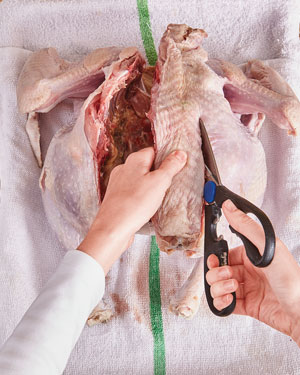
Step 3: Remove the Ribs
Use your fingers to swipe away the membranes attaching the ribs to the carcass, then cut to remove.
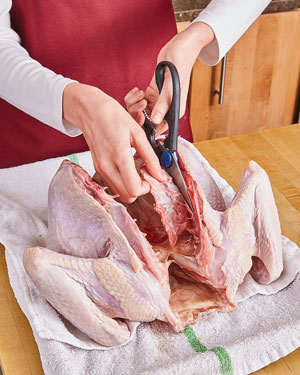
Step 4: Crack the Keel
To help flatten the bird, crack the inside of the keel (breast) bone with a heavy knife. Now, flip turkey over.
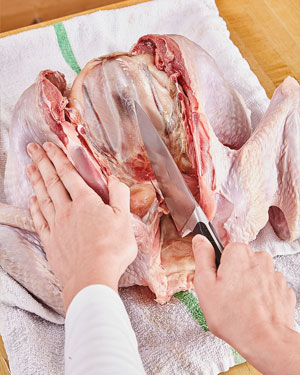
Step 5: Flatten the Bird
Forcefully press down on the keel bone with the heel of your hand until you hear it crack and give way.
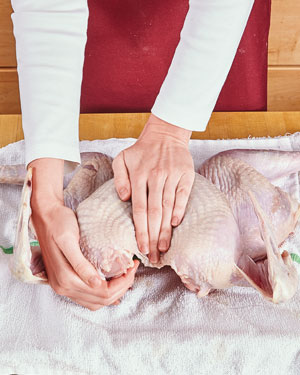
Step 6: Tuck the Wings Under
Prevent the wing tips from burning while the turkey roasts by tucking them under the breast.
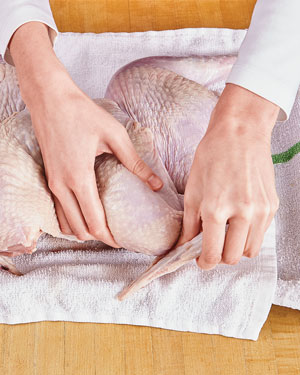
Watch The Video: How To Spatchcock a Turkey
Check out our How To Spatchcock a Turkey video to see the step-by-step technique in action.
Grab the Recipe
Now that you've learned the technique, grab our recipe for Roasted Spatchcocked Turkey with lemon-herb butter, our juiciest turkey recipe ever.
Turkey Buying Guide
Our Turkey Buying Guide will help you find the perfect bird for your holiday meal.
Like this article? Check out all of our How-To Cooking Articles & Videos, here.
Product Recommendations
Interested in cooking? Need some supplies?
Check out some of the tools we like. All products featured on Cuisine at Home are independently selected by our editors; we may earn an affiliate commission from qualifying purchases through our links.
